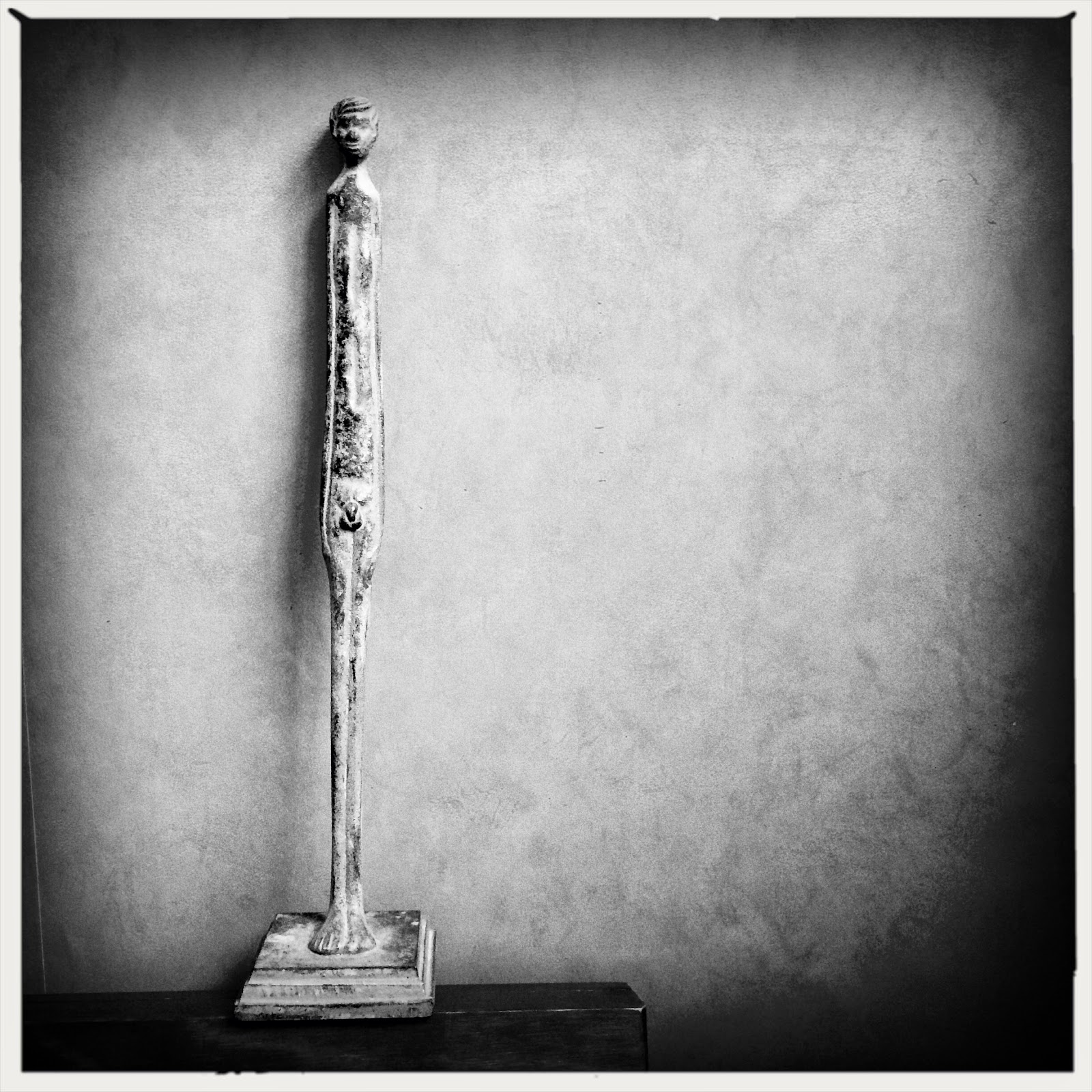THE THIN MAN, A SCULPTURE - poem by George Murray
On page 8 of “Act One”, George Murray’s book of poems, is my personal favorite, entitled, “THE THIN MAN, A SCULPTURE”. Well, perhaps it’s not my favorite, but we (his children) grew up with two sculptures of thin men in our home, one or both of which inspired him to write this poem, so the title was often in our minds. We still disagree on which of the two statues were his real inspiration, so here they both are, for you to see, and pass judgment on which is more likely to have inspired* the poem:
*This poem of my Dad’s was so embedded in my mind, I wrote a haiku (2-3-2 minimal form) inspired by it in 2012, which is posted on my haiku/senryu/photography blog: The Thin Man…
THE THIN MAN, A SCULPTURE
Tall and thin,
a reed for winds to play,
he stands
and fingers final bone.
a reed for winds to play,
he stands
and fingers final bone.
For flesh to fall away
the moment of decay
need never come,
the essence numb
from word and stone
and senses that betray.
the moment of decay
need never come,
the essence numb
from word and stone
and senses that betray.
He stands alone,
the minimum of self,
all channels of the felt
destroyed, unknown.
the minimum of self,
all channels of the felt
destroyed, unknown.
He climbs the steep
catastrophe of bone
toward the deep
impenetrable sky
and fails to die.
catastrophe of bone
toward the deep
impenetrable sky
and fails to die.
…
Copyright ©George Murray, 1976
ALL RIGHTS RESERVED
*This poem of my Dad’s was so embedded in my mind, I wrote a haiku (2-3-2 minimal form) inspired by it in 2012, which is posted on my haiku/senryu/photography blog: The Thin Man…





The poem can be about either sculpture, or no specific sculpture. I write poems and do sculptures, and occasionally the two activities rub shoulders, and then go their separate ways. I once asked an African seller of "workshop" sculptures why the figures were all "longish"? His answer was rather telling: the cheapest wood comes that way--thin and long.
ReplyDeleteHi Shakir - Russ again, son of George...I agree, and thank you for your observation and comments! I think the best poems, like any great art, have many levels and depths of interpretation and meaning, for the reader to react to, and ruminate on thereafter. I am pleased to know you are both poet and occasional sculptor (or is it the other way around?), and love the image of them "rubbing shoulders and parting ways" as you say. The vignette about the African sculpture is both funny, and telling--thanks!
ReplyDelete